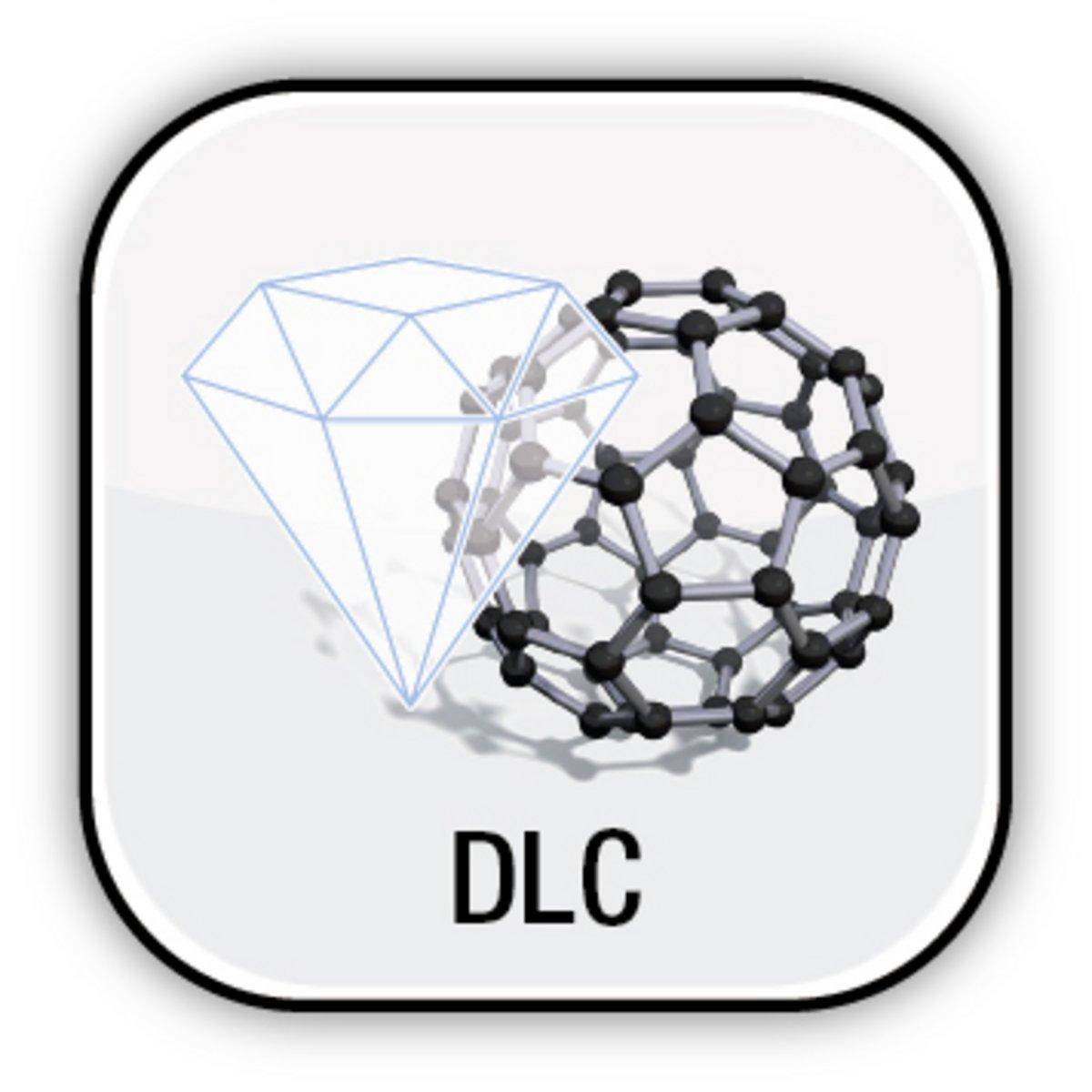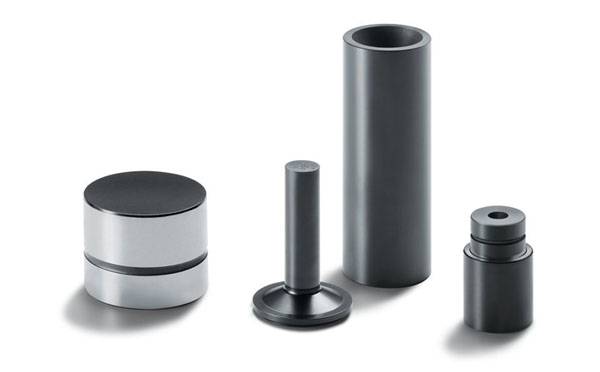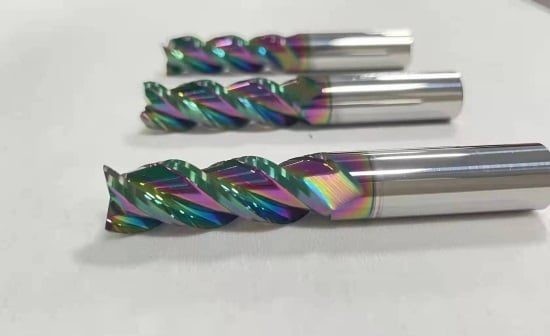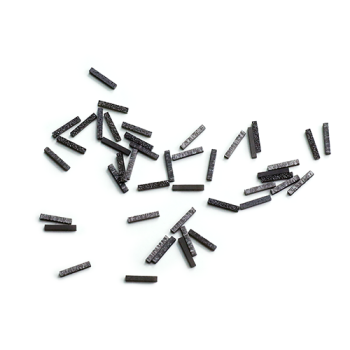Introduction to Diamond-Like Coating (DLC)
Properties of DLC Layers
Diamond-like carbon (DLC) layers are amorphous thin films composed primarily of elemental carbon, exhibiting characteristics that place them between diamond and graphite in terms of their physical and chemical properties. These layers are notable for their high hardness, which is comparable to that of diamond, making them exceptionally resistant to wear and abrasion. This high hardness is a result of the significant presence of sp3 bonds within the DLC structure, which contribute to its robust mechanical properties.
In addition to their exceptional hardness, DLC layers are also characterized by low friction coefficients. This property makes them ideal for applications where minimizing friction is crucial, such as in automotive components like pistons and bores, as well as in video cassette recorder (VCR) heads and copier machine drums. The low friction of DLC layers helps to reduce wear and tear on the components they protect, thereby extending their operational life and efficiency.
Moreover, DLC layers demonstrate excellent chemical resistance, which allows them to withstand harsh environmental conditions without degradation. This chemical stability is particularly advantageous in industrial settings where the coatings are exposed to corrosive substances or high-temperature environments. The combination of high hardness, low friction, and chemical resistance makes DLC layers highly versatile and suitable for a wide range of protective coating applications.
DLC layers are often deposited using advanced techniques such as radio frequency plasma-assisted chemical vapor deposition (RF PECVD). This method enables the creation of DLC films with a broad spectrum of optical and electrical properties, tailored to meet the specific requirements of various applications. The ability to deposit these films at relatively low temperatures ensures good adhesion to a variety of substrates, further enhancing their utility in diverse industrial and technological contexts.
In summary, DLC layers are unique in their ability to combine the best attributes of diamond and graphite, making them a superior choice for protective coatings in numerous applications. Their high hardness, low friction, and chemical resistance, along with the flexibility of deposition methods, position DLC coatings as a critical technology in modern industry.

Preparation Methods
DLC layers are predominantly fabricated through Physical Vapor Deposition (PVD) and Chemical Vapor Deposition (CVD) techniques. These methods are chosen for their precision and ability to produce high-quality coatings.
In PVD, the process involves evaporating or sputtering the target material, which then condenses to form a thin film on the substrate. This method is particularly favored for its ability to produce coatings with excellent adhesion and low contamination levels.
CVD, on the other hand, involves the chemical reaction of precursor gases at elevated temperatures to deposit the coating. This technique offers greater control over the composition and structure of the DLC layer, making it suitable for applications requiring specific properties.
The choice of target material is crucial and varies widely, including pure carbon, metal-doped carbon, composite targets, and amorphous carbon targets. Each type of target influences the final properties of the DLC layer, such as hardness, friction coefficient, and wear resistance. For instance, metal-doped DLCs can introduce additional functionalities like improved electrical conductivity or enhanced adhesion to certain substrates.
| Deposition Method | Advantages | Applications |
|---|---|---|
| PVD | High precision, low contamination | Tools, machinery, optical molds |
| CVD | Greater control over composition | Cutting tools, key components |
The versatility of these methods allows for the customization of DLC coatings to meet the specific demands of various industrial applications, ensuring optimal performance and longevity.
Applications of DLC Coatings
Tools and Machinery
Diamond-Like Carbon (DLC) coatings are integral to enhancing the performance and longevity of various tools and machinery components. Specifically, these coatings are applied to drills, milling cutters, and arbors, which are critical in precision engineering and manufacturing processes. The application of DLC coatings to these tools results in significant improvements in their operational efficiency and service life.
One of the primary reasons for this enhancement is the high hardness of DLC coatings. This hardness provides superior resistance to wear and abrasion, which are common issues that lead to the degradation of tool performance over time. By incorporating DLC coatings, manufacturers can ensure that their tools maintain their cutting edge (literally) for extended periods, thereby reducing the frequency of replacements and associated costs.
Additionally, the low friction properties of DLC coatings play a crucial role in improving the efficiency of these tools. Friction is a major factor that contributes to energy loss and increased heat generation during machining processes. The low friction characteristic of DLC coatings helps to minimize these issues, leading to smoother operations and reduced energy consumption. This not only enhances the overall efficiency of the tools but also contributes to a more sustainable manufacturing environment by reducing waste and energy usage.
In summary, the application of DLC coatings to tools and machinery components such as drills, milling cutters, and arbors offers a dual benefit of extended service life and enhanced operational efficiency. This makes DLC coatings an invaluable asset in modern manufacturing and engineering practices.
Optical Industry
In the optical industry, Diamond-Like Carbon (DLC) coatings play a pivotal role in enhancing the performance and longevity of optical disk molds. These coatings are meticulously applied to reduce friction, thereby minimizing wear and tear on both the molds and the optical discs they produce. The application of DLC coatings in this context ensures that the molds maintain their precision and integrity over extended periods, leading to higher quality optical discs with longer lifespans.
DLC's unique properties, including high hardness and low friction, make it an ideal choice for this application. The high hardness of DLC coatings provides excellent resistance to abrasion, which is crucial for maintaining the intricate geometries of optical disk molds. This resistance not only extends the operational life of the molds but also contributes to the consistent production of high-quality optical discs.
Moreover, the low friction characteristics of DLC coatings significantly reduce the adhesion and accumulation of debris on the mold surfaces. This reduction in friction and debris accumulation helps in maintaining the smooth operation of the molding process, further enhancing the overall quality and reliability of the optical discs produced.
In summary, the use of DLC coatings in optical disk molds represents a significant advancement in the optical industry, offering benefits that include improved mold and disc quality, extended operational life, and enhanced production efficiency.
Blades and Cutting Tools
Diamond-Like Carbon (DLC) coatings are revolutionizing the performance of blades and cutting tools, particularly in applications such as scissors and razors. The primary advantage of these coatings lies in their ability to significantly reduce friction, which not only enhances the cutting efficiency but also extends the service life of the tools. This is particularly crucial in high-stress environments where blades are subject to continuous wear and tear.
The application of DLC coatings on blades is multifaceted. For instance, in the case of razors, the reduced friction minimizes the tugging and pulling on the skin, resulting in a smoother and more comfortable shave. Similarly, scissors coated with DLC exhibit superior cutting performance, making them ideal for precision cutting tasks in various industries, including textiles and metalwork.

Moreover, the durability of DLC-coated blades is markedly improved due to their high hardness and resistance to abrasion. This means that these tools can withstand extended use without losing their sharpness or effectiveness, thereby reducing the frequency of replacements and maintenance costs.
In summary, the integration of DLC coatings into blades and cutting tools represents a significant advancement in tool technology, offering tangible benefits in terms of performance, longevity, and user experience.
Key Components
Diamond-Like Carbon (DLC) coatings are integral to enhancing the performance and durability of key mechanical components, particularly in specialized applications such as Stirling refrigeration machines. The application of DLC on components like pistons in these machines offers a dual advantage: oil-free lubrication and significantly improved wear resistance.
In Stirling refrigeration machines, the pistons operate under extreme conditions, requiring materials that can withstand high mechanical stress and thermal fluctuations. Traditional lubricants, such as oils, can degrade under these conditions, leading to increased friction and wear. DLC coatings, with their inherent low friction and high hardness properties, provide an effective solution by eliminating the need for conventional lubricants. This not only reduces operational costs but also enhances the overall efficiency and lifespan of the machinery.
Moreover, the wear resistance of DLC coatings ensures that the pistons maintain their integrity under prolonged and intense use, reducing the frequency of maintenance and extending the operational life of the Stirling refrigeration machines. This makes DLC-coated pistons a superior choice for industries where reliability and longevity are paramount.
Industrial Molds
Diamond-Like Carbon (DLC) coatings have found significant applications in industrial molds, particularly in processes such as powder metallurgy, plastic forming, and glass sheet forming. These coatings offer substantial advantages due to their unique combination of high hardness and low friction properties.
In the realm of powder metallurgy, DLC coatings enhance the performance of molds by ensuring precise shaping and minimal wear. This is crucial for maintaining the integrity and consistency of the final products, which often require intricate details and high precision.
For plastic forming molds, the low friction characteristic of DLC coatings plays a pivotal role. It reduces the adhesion of plastic materials to the mold surfaces, thereby minimizing defects and improving the quality of the formed plastics. Additionally, the high hardness of DLC ensures that the molds can withstand the mechanical stresses involved in plastic forming processes, leading to extended tool life.
Glass sheet forming molds also benefit immensely from DLC coatings. The high hardness property ensures that the molds can endure the high temperatures and mechanical forces associated with glass forming, while the low friction helps in achieving smoother surfaces and reducing the likelihood of defects in the glass sheets.
Overall, the application of DLC coatings in industrial molds not only enhances the durability and efficiency of these tools but also contributes to the production of higher quality end products.
Related Products
- Custom CVD Diamond Coating for Lab Applications
- Laboratory CVD Boron Doped Diamond Materials
- HFCVD Machine System Equipment for Drawing Die Nano-Diamond Coating
- CVD Diamond Domes for Industrial and Scientific Applications
- CVD Diamond Cutting Tool Blanks for Precision Machining
Related Articles
- Advantages and Disadvantages of Chemical Vapor Deposition (CVD)
- The Process of Fabricating a CVD Diamond By MPCVD Machine
- How CVD Coating Can Help You Achieve High Purity and Density
- Mastering Handheld Coating Thickness Gauges: A Comprehensive Guide for Industrial and Automotive Applications
- Chemical Vapor Deposition (CVD) of Graphene Challenges and Solutions












